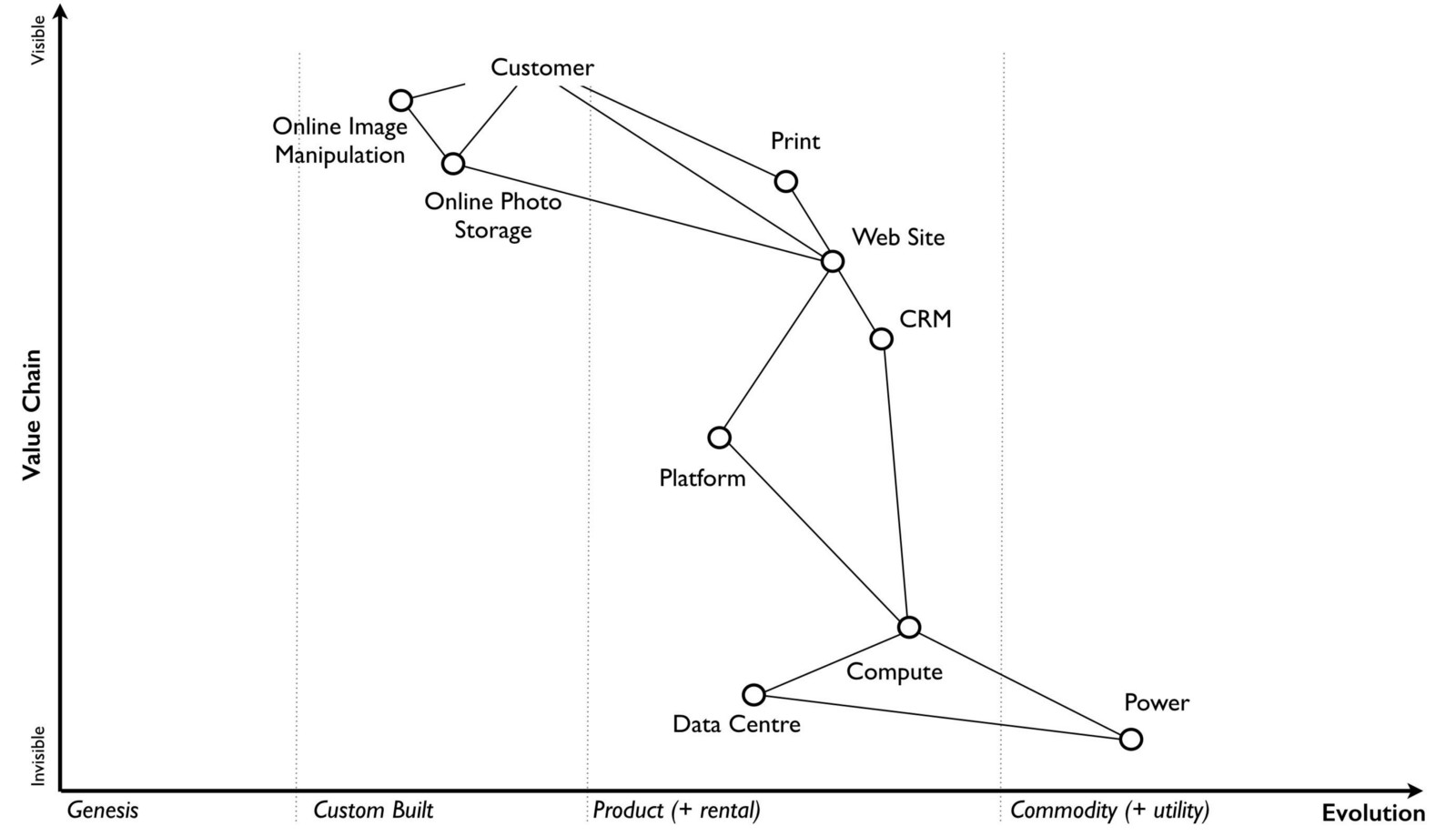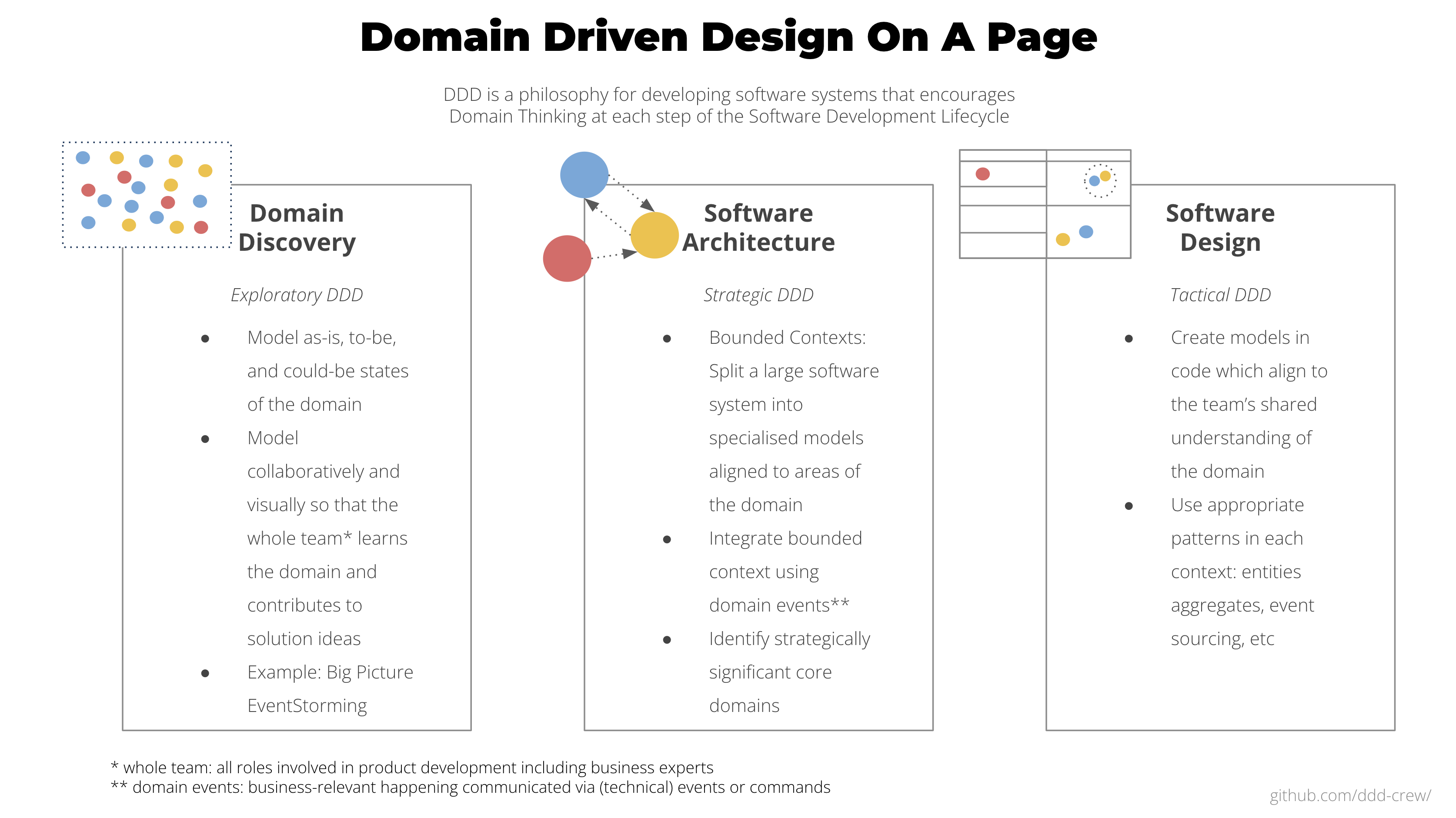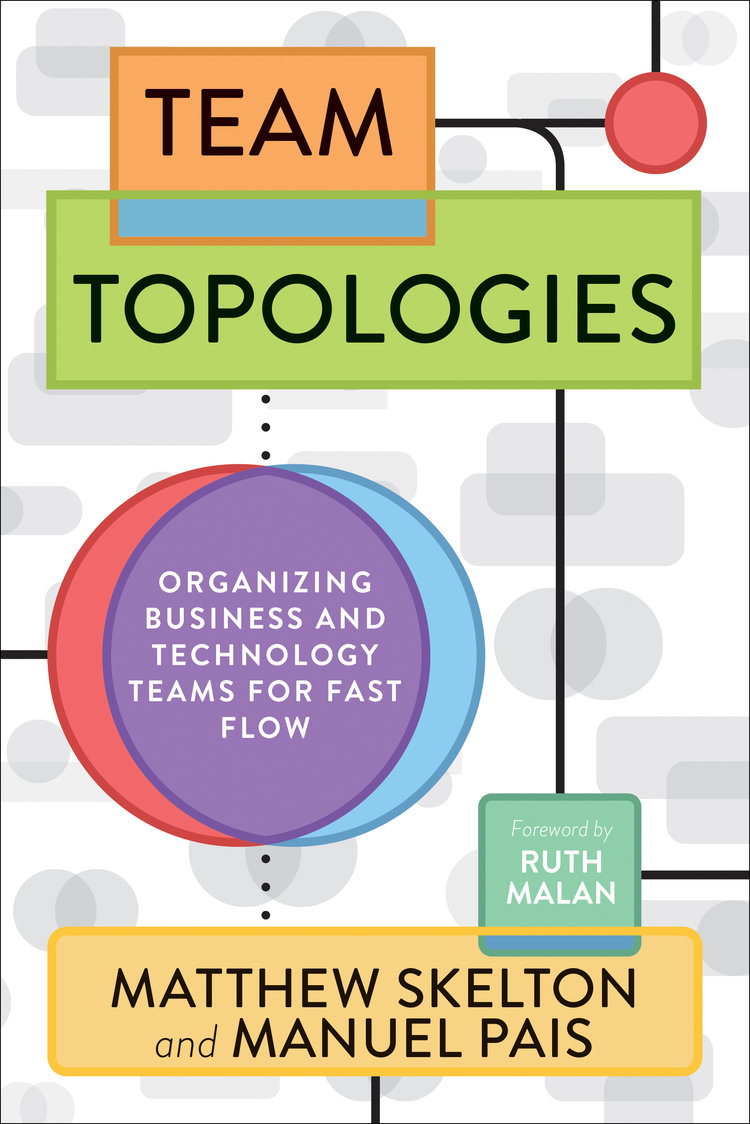From Wardley Maps to User Needs Mapping: Simplifying the journey to value
User Needs Mapping is a technique that has gained traction as a practical and accessible way for organizations to find team and service boundaries. But where did it come from, and why does it matter? To understand the origins of User Needs Mapping, we need to explore its roots in Simon Wardley’s Wardley Mapping and its connections to Domain-Driven Design (DDD) and Team Topologies. These methodologies have paved the way for more adaptive and user-centered approaches to team and service design.
The foundation: Wardley Mapping
Wardley Mapping, originally developed by Simon Wardley, is a strategic tool that visualizes the relationships between components of a system and their evolutionary stages. It helps organizations to make stratgic decisions about how their organization can compete by considering their Purpose, Landscape, Climate, Doctrine and Leadership.
A Wardley Map typically includes elements like:
- Users: The people or entities benefiting from the system.
- Needs: What those users require.
- Capabilities: The services or systems delivering those needs.
- Evolution: How components mature over time, from genesis to commodity.
Wardley Mapping’s strength lies in its ability to uncover strategic insights, but its complexity can pose a barrier to entry. It’s often joked that it takes years to master Wardley Mapping, not because the tool is flawed, but because it requires a deep understanding of strategy, systems thinking, and organizational dynamics.
The challenge of cognitive load
Wardley Mapping is awesome, but with practitioners needing to grapple with concepts like value chains, evolutionary stages, climatic patterns, doctrinal principles and leadership stratagems it can be daunting to get started. Simon Wardley himself advises beginners to “start with users and needs” as a way to build confidence before diving into more complex aspects of mapping. This advice forms the cornerstone of User Needs Mapping.
Bridging the gap: User Needs Mapping
By focusing solely on identifying users and their needs. It strips away the more advanced elements of Wardley Mapping to create an entry point that teams can adopt quickly. By doing so, it offers a practical way to:
- Reduce cognitive load.
- Provide immediate insights.
- Lay the groundwork for more advanced mapping techniques.
At its core, User Needs Mapping emphasizes:
- Clarity over complexity: Focus on understanding users and their needs without overwhelming teams with jargon or advanced concepts.
- Practicality: Deliver value by helping teams identify actionable insights about team boundaries and service alignment.
- Accessibility: Make strategic tools like Wardley Mapping approachable to a broader audience.
The connection to Domain-Driven Design
Domain-Driven Design (DDD) is another methodology that heavily influences User Needs Mapping. DDD emphasizes understanding the domains and subdomains within a system and aligning team boundaries around these domains. While DDD provides robust tools for modeling domains, it can also overwhelm teams unfamiliar with its terminology, such as bounded contexts, aggregates, and anti-corruption layers.
User Needs Mapping serves as a stepping stone to DDD by encouraging teams to think about domains (or business capabilities) in simpler terms. It introduces concepts like:
- Domains: Broad areas of responsibility within an organization.
- Capabilities: The specific functions needed to meet user needs.
- Team boundaries: How to structure teams to align with these capabilities and domains.
By starting with users and their needs, User Needs Mapping helps teams develop a domain-driven mindset without requiring them to dive into the full complexity of DDD upfront.
The influence of Team Topologies
Team Topologies, developed by Matthew Skelton and Manuel Pais, introduces two critical lenses: fast flow and cognitive load. These lenses align perfectly with the goals of User Needs Mapping. Team Topologies emphasizes designing teams to reduce cognitive load and enable fast flow of change. User Needs Mapping incorporates these principles by helping organizations identify:
- Which teams should own specific capabilities.
- How to minimize dependencies between teams.
- Where platform teams can support stream-aligned teams.
User Needs Mapping: A practical approach to strategic thinking
By drawing from Wardley Mapping, DDD, and Team Topologies, User Needs Mapping creates a practical approach that lowers the barrier to entry for strategic thinking. It allows teams to:
- Start with the basics: Identify users and their needs.
- Develop insights: Map capabilities and align them with team boundaries.
- Reduce complexity: Avoid overwhelming teams with advanced frameworks at the outset.
For organizations looking to improve alignment, reduce cognitive load, and enhance flow, User Needs Mapping offers a powerful starting point. It’s not a replacement for Wardley Mapping, DDD, or Team Topologies, but rather a stepping stone that bridges the gap between theory and practice.
Ready to dive deeper?
Take a look at Introduction to User Needs Mapping to get started.



